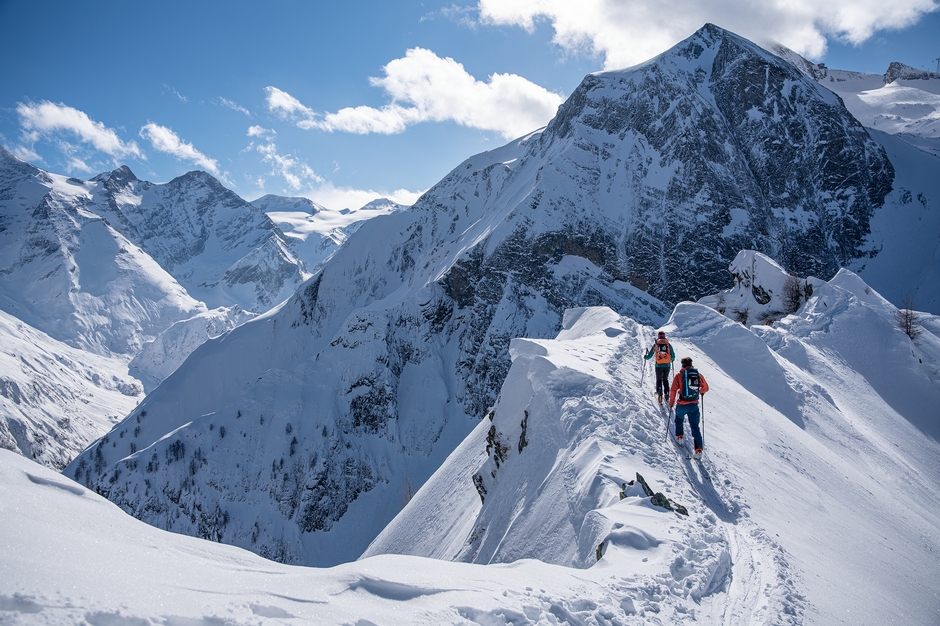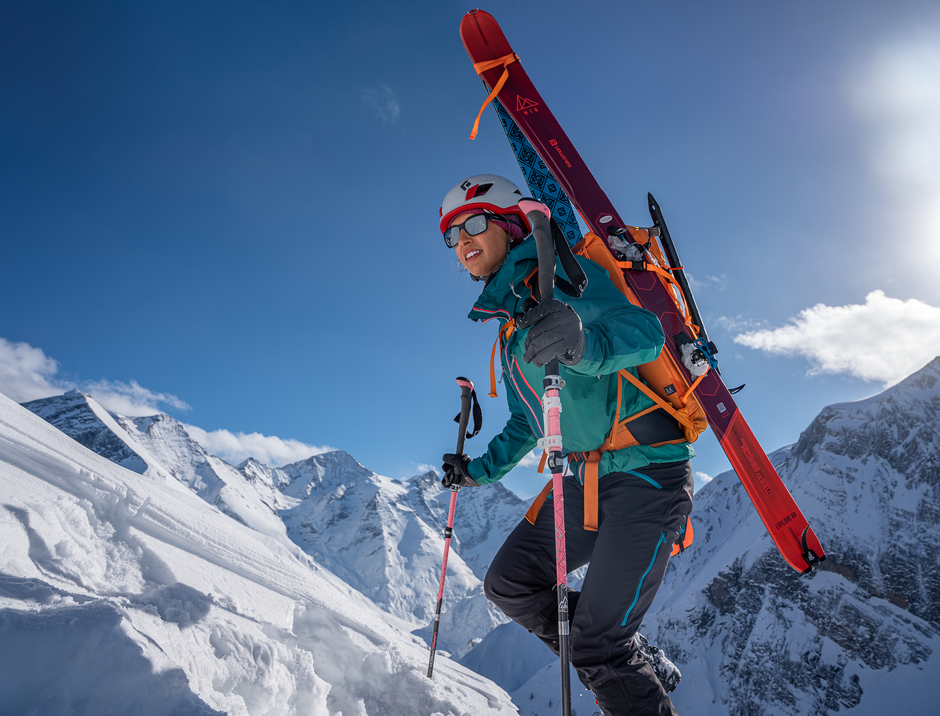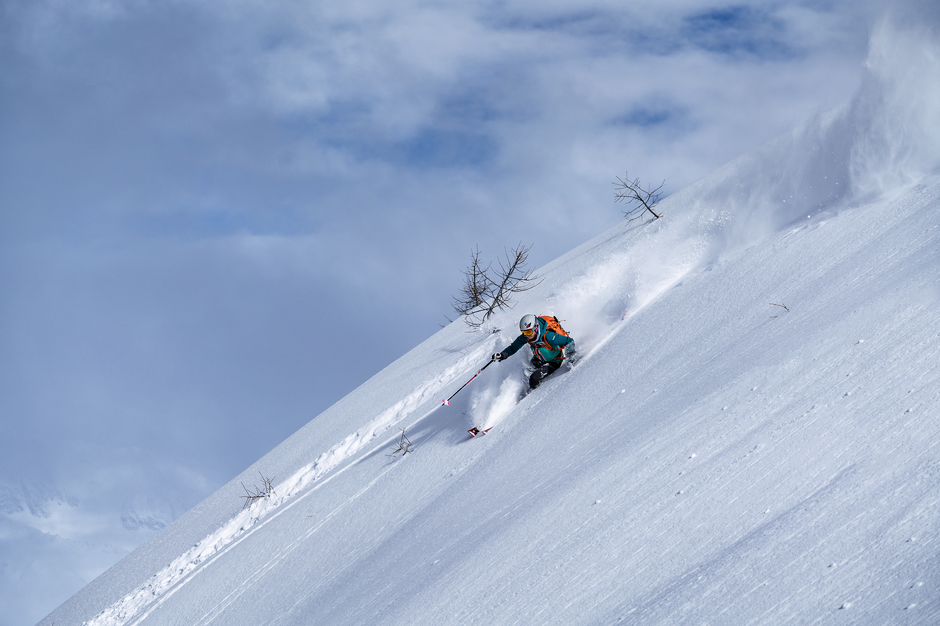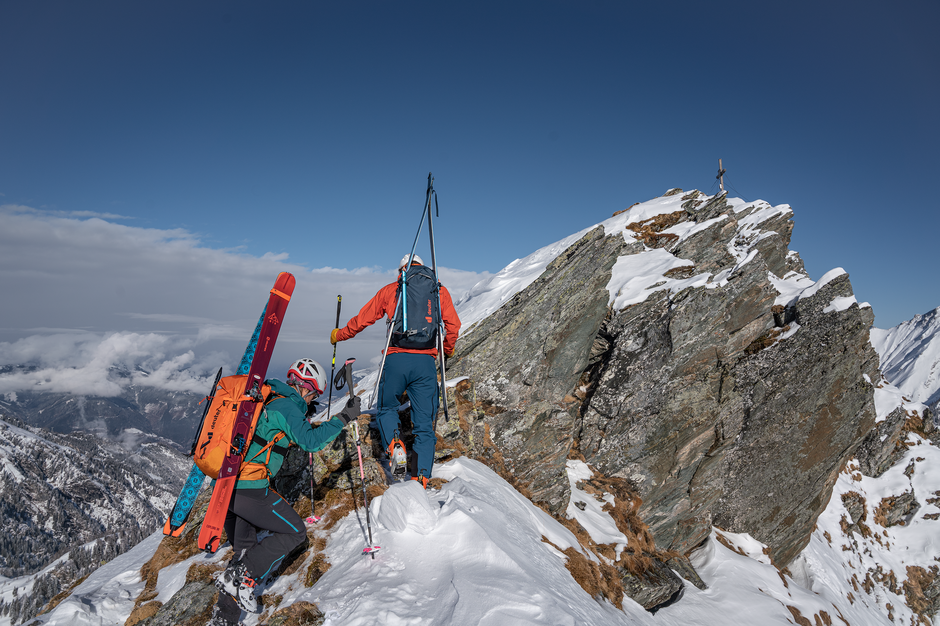11 useful tips on ski touring responsibly

11 useful tips on ski touring responsibly
With so many ski areas remaining closed last winter because of the coronavirus pandemic, ski mountaineering and ski touring experienced a real revival. Away from the pistes this individual sport is booming. It's evident from the lines of cars snaking their way like shiny ribbons through the beautiful winter landscape at the weekends, but also from sports retailers' sales figures. "Some retailers in southern Germany have talked of a factor of 1 to 10," according to Stefan Herzog, president of the German Sports Retailer's Federation and its European counterpart FEDAS. "That's ten pairs of touring skis to one pair of alpine skis." The ski touring sector, which unlike other sports does not involve lots of people in close proximity to one another, has expanded by almost 50 percent.

Ski touring comeback
Over the years, ski touring has steadily gained in popularity throughout the Alps, with many people choosing to spend their winter leisure time away from the groomed pistes, and instead in the untamed backcountry. But the pandemic has served to further accelerate the trend. We're seeing a revival of the kind of ski tourism that existed in the early 1960s - no lifts, just skins and your own muscle power. And it's the perfect way to get away from the crowds and into the untouched snow.

Changing mindset
The shift away from the crowds and into the backcountry is both a blessing and a curse, however. People are fleeing the crowds in such great numbers that there's not as much peace and quiet as you'd think away from the groomers. "It's putting a lot of pressure on nature," explains Thomas Bucher, Press Officer for the German Alpine Association (DAV). What's needed is a shift in the way we think and a responsible approach to our resources, and careful consideration for the current societal, ecological and ethical status quo. A great deal of responsibility falls to the ski industry itself, but also to each individual skier. And it doesn't just start on the mountain either, but at home as well.
Ski touring that's responsible and sustainable
From equipment to transportation, and even to the way you lay down tracks - there are choices to be made. Responsible choices with a sustainability-focused approach to nature, people and ultimately to ourselves. We've compiled some food for thought on the subject and some guidelines on how to pursue your leisure activities in harmony with nature and fellow humans - while also leaving you feeling good about the fact that you're protecting what you love and acting with consideration for others.
At home:
-
Equipment: When buying new equipment, make sure it's of high quality and durable, and made in accordance with the most stringent environmental and social standards like bluesign®, Green Button (Gruner Knopf), Responsible Down Standard, Fair Wear Foundation etc. Carefully consider any purchases you make and ask yourself whether you really need something new, or whether you could extend the life of your existing gear through better care or by repairing it. Think about whether you need different equipment for each sport, or whether there's a multipurpose solution that covers a range of mountain sports, that can also be used in the city, for example. Always make sure no PFCs have been used in its production. These days there are excellent waterproofing finishes or □WR (durable water repellent) solutions that do not contain any harmful per fluorinated carbons.

-
Sustainable planning: Plan your outings using guidebooks or maps that feature the 'NaWrlich auf Tour' seal from the German Alpine Association (DAV). In addition to indicating ski touring ascent routes, these also feature protected areas and wildlife conservation zones. Make sure you're well informed on the weather and avalanche situation. Check that you have all your
safety equipment with you and test it's all in good working order. It may seem obvious, but it's not. According to a 2020 study into the behavior of ski tourers at the Taubenstein in the Spitzingsee region carried out by the Munich section of the German Alpine Association in collaboration with Ludwig Maximilian University, Munich (https://www.alpenverein-muenchen oberl and.de/ presse/ pressemitteiIungen/ medieninfos-202 0/2 020-12-0 4-studie-tourengehen am-ta ubenstein) the following is alarmingly common:
-
Most ski tourers tend to think avalanche conditions are of no concern. And they consistently underestimate the current avalanche danger levels, making their own incorrect estimates.
-
29 percent did not have any avalanche equipment with them at all, and a further 7 percent only had an avalanche beacon.
-
The average ski tourer in the Taubenstein region partakes in their chosen winter sport irrespective of bad weather conditions. Cold temperatures, wind and precipitation were secondary to the enjoyment of ski touring.
-
63 percent of ski tourers only found out about any woodland or wildlife protection zones once in the backcountry already.
-
- Environmentally friendly travel: Where possible, use public transportation or carpools to get to your ski destination.

In the mountains:
- Use official parking areas: Only park in designated parking spaces and always check you're not blocking any driveways or emergency access roads, and do not park on private land or nature reserve land. Be considerate. Parking fines can also be very high.
- Follow signage: Take note of any signs, information and the route recommendations provided by the DAV's 'eco ski mountaineering' project or those of your local alpine association. That way you can be sure the ascent route you've chosen is nature friendly.
-
Respect protected areas and sanctuaries for flora: In forested areas and near the edge of forests, stick to the usual ski routes or forestry roads and hiking trails, keep your distance from trees and shrubs and do not damage any newly planted trees. It's really important to behave responsibly around woodland. It might seem like there's a perfect little ski route on a seemingly empty, snow-covered corridor through the woods. But you might be looking at a reforestation strip. These are urgently needed for the regeneration of alpine forests and their protective function. By skiing through these areas, the sharp edges of your skis can harm young trees under the snow. Young trees like these are also often used as habitat by local wildlife.

-
Respect protected areas and sanctuaries for fauna: Wild animals are generally well adapted to the seasons and in the fall, they eat up fat stores. In winter, their top priority is to conserve energy and use it wisely! Feeding areas and trails are snow-covered a lot of the time, making survival challenging for them. In general, wild animals need a lot of rest in wintertime and should not be disturbed. Any additional stress, such as fleeing from humans, can easily be deadly, and not just for the weak or sick. Energy consumption increases enormously when they have to flee, and fat reserves are drastically reduced. So keep the noise down, avoid wild animals as much as possible, only observe them from a distance, steer clear of feeding stations, and keep dogs on a leash.
-
Special protection for black grouse: Black grouse are natural born survivors but even they are under threat from extinction. Each time they have to flee, it can cost them their lives, so stay away from areas where they like to burrow in midwinter such as peaks, crests and ridges before 10 am and after 4 pm.
- Longer stays: Generally speaking, it's more sustainable to undertake fewer longer stays instead of more frequent daytrips.
- Piste regulations: Always observe local rules and regulations for ski touring in pisted ski resorts and codes of conduct for ski touring on the piste. The DAV has some useful guidelines. (https://www.bergzeit.co.uk/journal/ski-tauring-up-down-the-slopes-10-pointers-on-IiabiIity ruIes-due-diIigenee/ #1-wh y-go-ski-touring-on-pistes)
- Leave no trace: Don't leave any waste behind in nature because it's very damaging to natural cycles and can cause severe suffering to animals and plant life. For instance, one cigarette butt, with up to 4,000 toxins in it, will render 50 liters of water undrinkable. Paper tissues take at least 3 years to disintegrate, and plastic packaging never decomposes. Using the deuter Dirtbag makes it easy to bring your trail trash back down with you - and even any garbage you find along the way - in an odorless, no-mess form. And it sets a good example too.
So let's all pull together to help protect the flora and fauna of the natural world, so that future generations can enjoy it. Respect, consideration, and fun and enjoyment are not mutually exclusive when it comes to mountain sports - they actually enhance the whole experience.

At deuter, we're also trying to do our bit by taking a variety of measures as part of 'the deuter Promise' by producing durable, sustainable products that meet the highest environmental and social standards, and consequently also minimizing our carbon footprint.
Why not check out our Freescape Pro pack that's made to the highest environmental standards? This ski mountaineering pack, designed for ambitious multi-day projects, is made using 100% recycled, bluesign® certified body fabric, which means it's a sustainable option. And like all deuter products, the Freescape Pro is also PFC free.